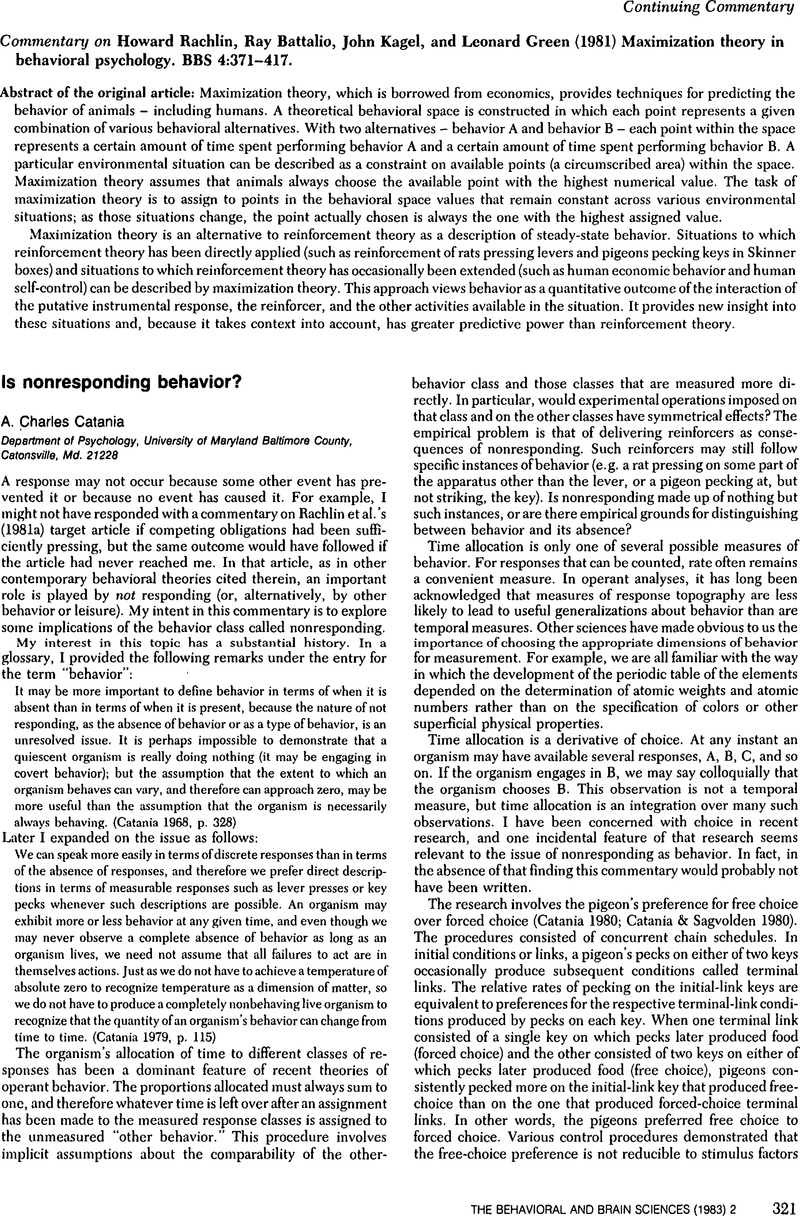Crossref Citations
This article has been cited by the following publications. This list is generated based on data provided by Crossref.
Cerutti, Daniel
and
Catania, A. Charles
1997.
PIGEONS' PREFERENCE FOR FREE CHOICE: NUMBER OF KEYS VERSUS KEY AREA.
Journal of the Experimental Analysis of Behavior,
Vol. 68,
Issue. 3,
p.
349.
Catania, A. Charles
Reilly, Mark P.
Hand, Dennis
Kehle, Lara Kowalsky
Valentine, Leanne
and
Shimoff, Eliot
2015.
A quantitative analysis of the behavior maintained by delayed reinforcers.
Journal of the Experimental Analysis of Behavior,
Vol. 103,
Issue. 2,
p.
288.
Catania, A. Charles
2023.
Prolegomena to any future philosophy of behavior analysis as a science.
Journal of the Experimental Analysis of Behavior,
Vol. 119,
Issue. 1,
p.
209.





